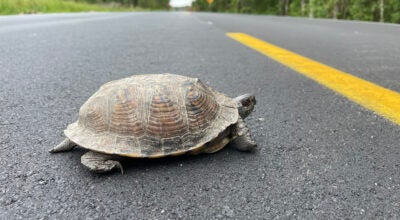Exploring Venezuela
Published 6:00 am Sunday, March 6, 2016
By Joanne Wilkinson
During the three years I lived and taught in Caracas, Venezuela, I tried to explore as much of the country as possible. Fortunately, many of the other teachers I taught with wanted to visit new places so I always had someone to go with me.
One of the most popular places to go on the weekend was located right in Caracas. The teleferico, or cable car, started in the city and transported passengers to the top of Mt. Avila, which is 9,000 feet above sea level. The view of Caracas and the Caribbean Sea was spectacular. There were food vendor stands selling juices and arepas, which are little buns made with white corn meal and filled with cheese or meat. After eating, and enjoying the cooler air at the top, we would then climb down the mountain, which would take us several hours. A few times when we were feeling really energetic we hiked up the mountain and rode the cable car down, but that did not happen very often.
Sun and strawberries
Colonial Tovar, located in the mountains 45 minutes outside of Caracas, was one of my favorite places to go. It was always a very pleasant 70 degrees due to the elevation. The first time I went there I could not believe my eyes. It was exactly like a small Bavarian village with timber-framed houses, flower boxes under the windows and signs advertising Wiener schnitzel and apple strudel. We tried a different restaurant each time we went, and they were all good. I remember wonderful desserts of fresh strawberries with cream, and decadent German chocolate cakes. Before heading back to Caracas we always stopped at the fruit stands and came away with baskets of fresh peaches, apples and strawberries, all locally grown.
There were many beaches within easy reach of Caracas. One of the best was Cata Beach located a few hours away, but worth the drive, as there was almost no one else there. The only way to access Cata Beach was by boat, or on a mountain track that my little VW Beetle seemed to manage nicely. We often spent the entire weekend there as small cabanas were available for rent, and the beach at night was so beautiful especially on a clear night when the stars were brightly shining.
Jungle Rudy
The one place that I wanted to see more than any other place in Venezuela was the area to the south of the country called Canaima National Park. The area is famous for its tepuis, or large flat topped sandstone formations as high as mountains. Angel Falls, the tallest waterfall in the world, cascades down from one of the tepuis. On the flight to Canaima the view out of both sides of the plane was stunning as we were surrounded by tepuis, and the wings of the plane almost seemed to touch the steep cliffs. There were two places to stay in the area; one was a little resort run by Avensa, a Venezuelan Airline. Rudy Truffino, more commonly known as Jungle Rudy, owned the other camp. We stayed at the Avensa camp as it was easier to make reservations directly through the airline, but one day another friend and I made our way through the jungle to Rudy’s camp, which was called Ucaima. Rudy, originally from Holland, built the camp in the early 1960’s by hand including all the buildings and furniture.
Rudy explored much of the area that up until then had been virtually undiscovered. He became friends with the local people, the Pemon Indians, and he learned to speak their language. He led tours overland to Angel Falls, which involved two to three days of hiking, navigating through rapids in dugouts, and camping out at night. He knew the names of most of the native plants, and had so many stories to tell about the area. Rudy told me one story that sent chills down my spine. He was on his own in a remote area when a bushmaster, an extremely poisonous snake, bit him on his toe. He made two cuts in his toe, and squeezed out the venom. He knew that he had to remain motionless so that the poison would not spread through his body. He lay still for three days despite being delirious and badly needing water until he finally felt well enough to walk again. The bite could have killed him.
He loved the land, and felt completely at home there. He was passionate about preserving the natural state of the area, and he had no interest in material things, wealth or fame. He died of a brain tumor in 1994 at the age of 66, and is buried at Ucaima, the place he loved so much. He was an exceptional man, and I am so glad that I knew him.
I came to love Venezuela, and am saddened that it finds itself facing economic chaos as well as an appalling crime rate. Hopefully one day it will be safe enough to visit again.
Joanne Wilkinson is an Oxford resident. Contact her at jwilkinson1487@gmail.com.





